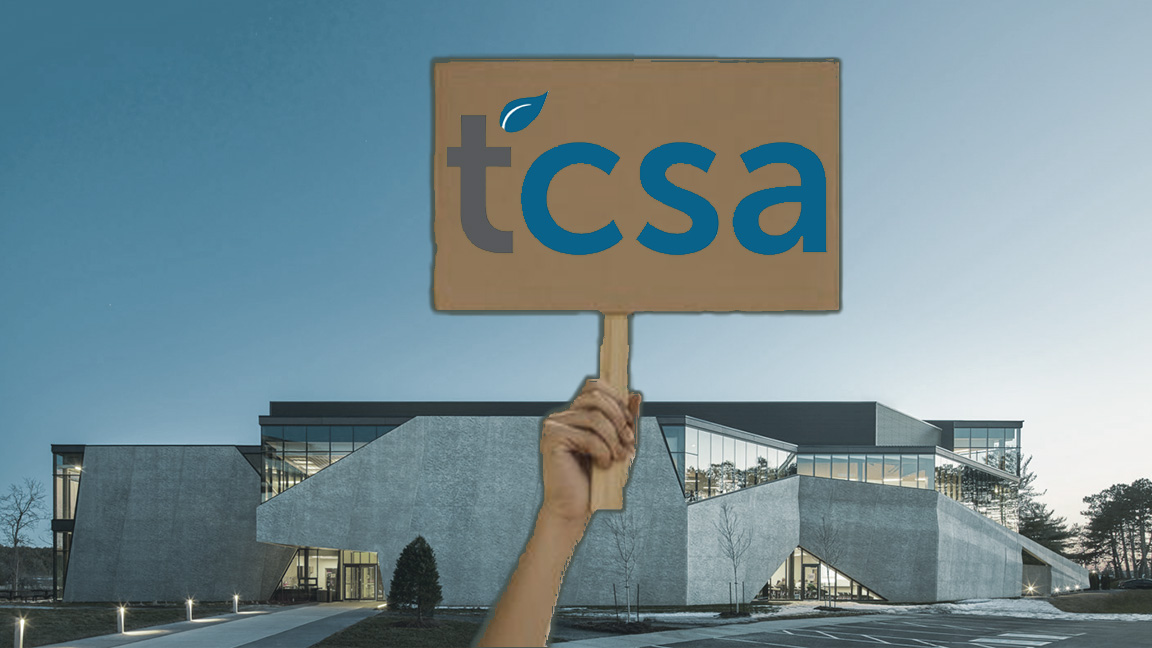Student politics can seem to many students dry, time-consuming, and uninteresting. We simply elect (if we vote at all) people who profess to have our best interests at heart or those with a better understanding and drive to be in an official position. If they know more than the average university student when it comes to student policies, laws and regulations, then they are probably the best people to handle these topics in official capacities. It’s guess work, not an exact science, but it works for most. The problem with this kind of blind trust, however, is that there isn’t much in the way of accountability from the student body to the elected few whose decisions somehow affect our student experience. From transit to student initiatives, activities and more the Trent Central Student Association, better known as the TCSA, is the governing body that oversees many student affairs.
Unbeknownst to a large majority of students, the TCSA held their Winter Semi-Annual General Meeting (SAGM) on February 8, with an attendance of a little over 30 people. This number includes members of the executive team, including its well-known head and president, Brandon Remmelgas. If you’re not fully sure what this meeting was about and why it is important, you should first know why it relates to students at all.
As a Trent undergraduate student, a small part of the fees you pay goes to the TCSA. A grand total of $727.80 in TCSA fees is paid at the start of the fall semester, by each undergrad enrolled in 1.5 credits or more. Of this, almost $300 each goes to transit and benefits, $99 to the Student Centre, and $33.70 to TCSA membership itself and a few other small fees. What’s most important in this breakdown is understanding exactly what your TCSA Membership means and what rights it affords you as a Trent student.
Your fee payment, parts of which are non-refundable, allow you to participate in all TCSA activities, participate in committees, vote in elections, and run for office. In addition to this, members have speaking and voting rights at general membership meetings, and speaking rights at meetings of the Board of Directors, both of which are open to all members to attend. In an ideal world, a large majority of the members and students would attend these meetings to become more involved and informed on the agendas being pushed and ultimately decide if they support them. In the world we currently live in, the closing deadlines of papers, upcoming midterms, tasking projects and 8 a.m. classes occupy the larger part of our list of priorities. Student politics is the least of our problems.
After my attendance at the TCSA SAGM last week, it seems clear that there is a certain level of dysfunctionality that needs to be addressed within our governing body’s ranks. From the snippy comments, disregard for meeting rules, and even our Vice President of Clubs and Groups shouting her way through conversations, student politics seems to be a much more lively affair than expected: executives speaking out of turn, being unable to properly answer questions, and arguing with members speaks to the group’s disorganization. What is meant to be a meeting focused on amending by laws and renaming office positions quickly became an awkward and uncomfortable fight for dominance amongst the larger personalities and a badly-veiled push for a political agenda. Said agenda is available for anyone to peruse on the TCSA website.
Starting at 12:23 p.m. instead of the advertised 12 noon, the three dozen or so people in room 2.02 at the Student Centre settled into their seats, munching on a variety of pizza courtesy of the student body in association with Domino’s pizza. After the land acknowledgement and a motion to approve the agenda, we finally got into the thick of things, the first of which is the 2017-2018 financial statement. This is where we hit our first bump. The accountant who prepared the TCSA’s first-ever full financial report is in absentia, and missed the October meeting as well. There is a vague mention of the possibility of a separate meeting with the accountant to go over the financial details, should any members be interested. Any questions asked were answered with words of caution that they were not professionals nor familiar with accounting. The Q&A session passes quickly and the motion to approve a barely understandable financial report is carried.
The next item on the agenda is where the meeting focuses a bulk of its time: approving proposed changes to the existing by-laws. A quick skim through the amendments show nothing more than an elaboration of previous by-laws and minor semantic changes, most, only reflecting practices that are already commonplace. The amendments quickly become a source of contention amongst members and the executive team. Soon after the topic of by-laws is raised, the legality of by-laws left unchecked or approved by legal counsel is brought up. Several members of the executive team are vehemently against this idea, and one sites the costly repercussions. The previously addressed financial statement seemed to suggest there was excess revenue over expenses in the TCSA, so is funding really the issue?
“We never used a lawyer in the past” is another argument another exec brings up, but whether this is so because of a lack of funds, an unwillingness to do so, or a lack of interest or push on the part of the members is unclear (not to mention that "this is how we’ve always done it" isn’t an argument that speaks to whether or not we should have legal counsel on these by-laws, but one that states the history of the creation of our by-laws). The next question becomes, if no one with a legal background is overseeing these by-laws, how are we sure that student’s interests are best expressed and protected by them? How can those uneducated in legal affairs properly amend these laws? We may very well not need legal counsel, but our executives should know why it may not be necessary, not simply shut down the idea due to expenses or dogmatic ideas of "how we’ve always done things." This section of the meeting dragged on for some time as more amendments were proposed, questions asked, and conversation kept circling back to the question of legality, to the ire of the exec team. It’s finally put to a vote, and those in favour of legal counsel are outnumbered by those against by half a dozen.
The most interesting thing to note other than the friction between the meeting chair and TCSA president, and besides the shouting match between the VP of Clubs and Groups and anyone in favour of seeking legal counsel, was the push for accepting the amendments made to the by-laws. Both the president and VP visibly exhale a sigh of relief when the amendments are approved. There is a brief mention of time-dependent by-laws that need to be passed, but no one elaborates on what those are and why semantics would be time-dependent.
After addressing one more item on the agenda, the clock strikes 2 p.m., and the room votes to adjourn the meeting. The air is heavy as people gravitate towards each other to discuss the rather intense meeting or air their frustrations. I walked out of the meeting more concerned and confused than when I walked in, wondering what exactly had been approved in the mere 90 minutes since the meeting’s commencement. At least one thing has become apparent: these meetings are important to each student and the student body at large. Many people may be disinterested in the workings of the student government, but it may be worth swinging by a meeting or two during the year. After all, your money paid for the pizza.


.png)


.jpg)


.jpeg)



.jpg)

.jpg)









.png)